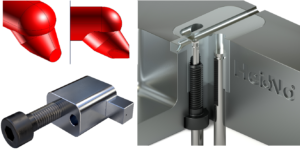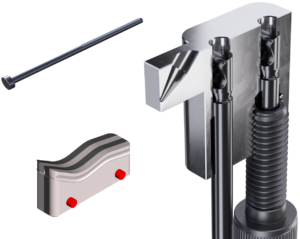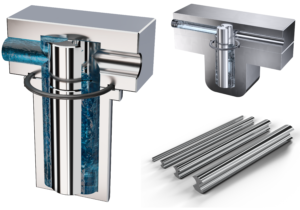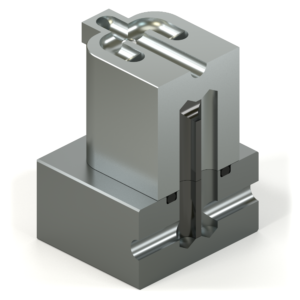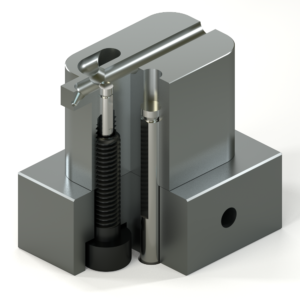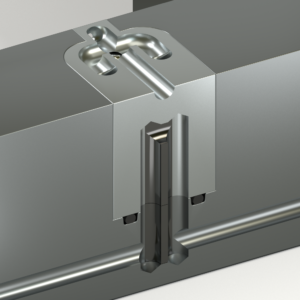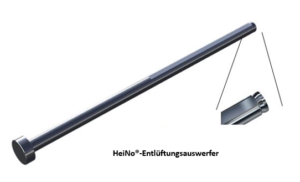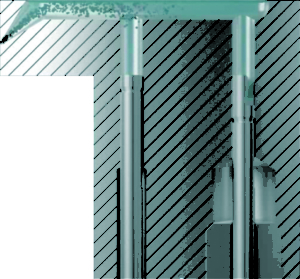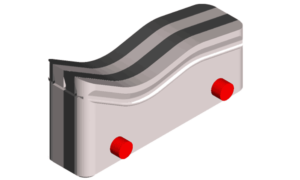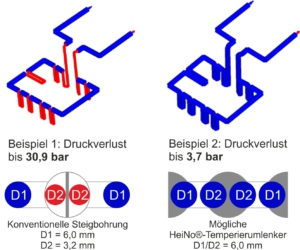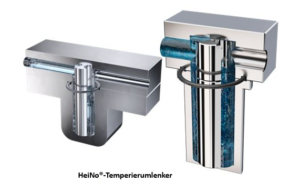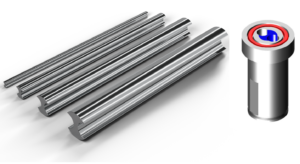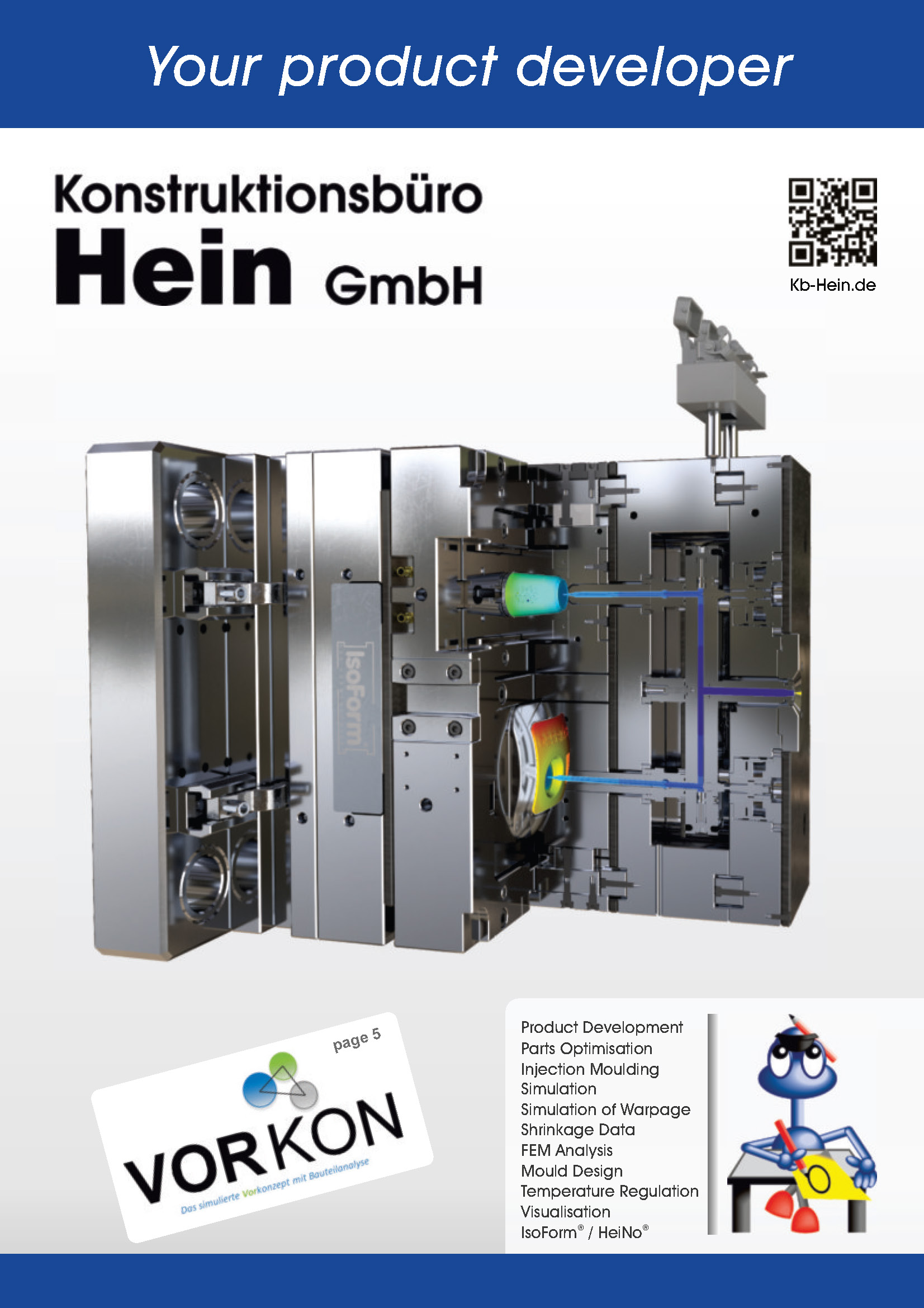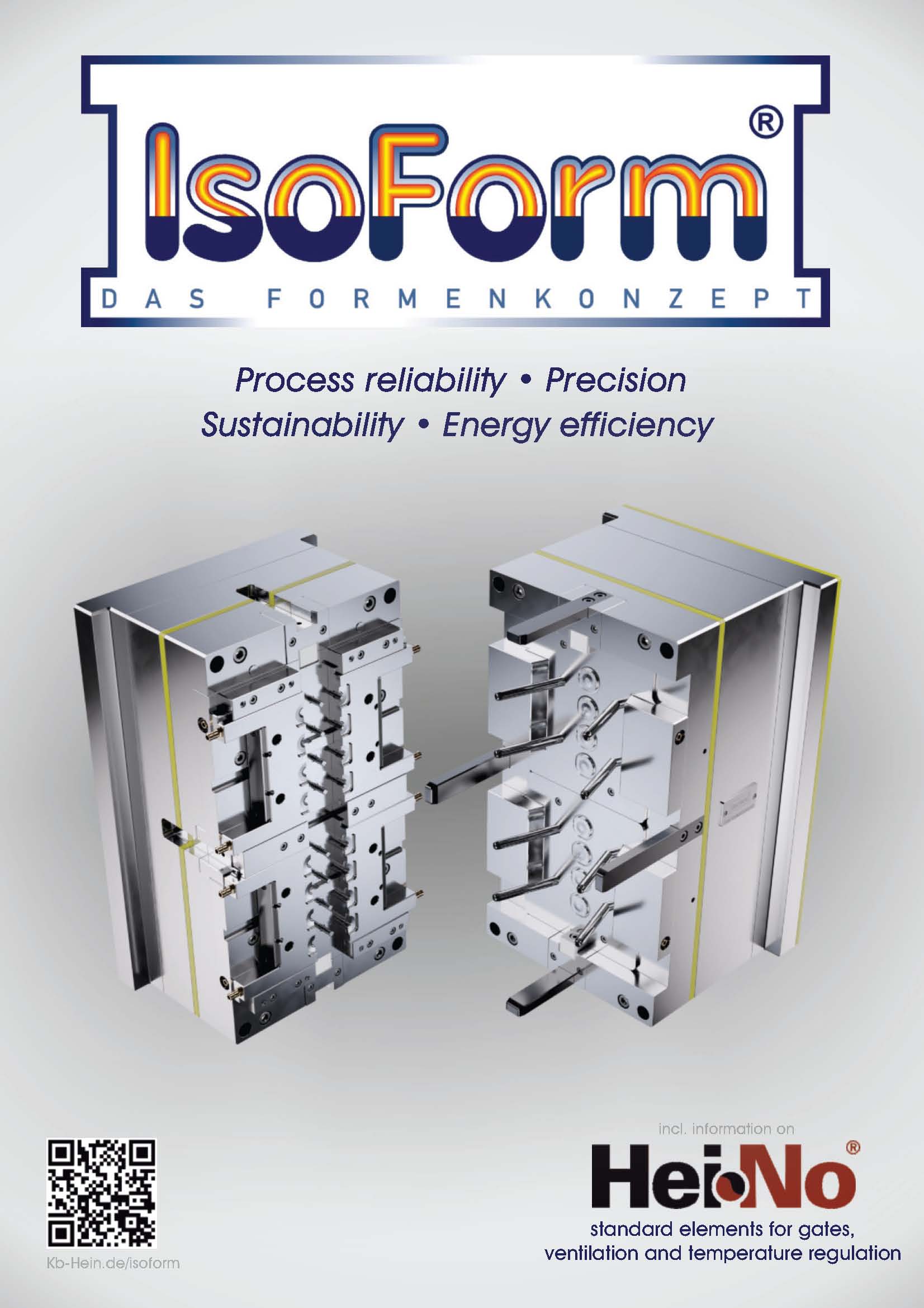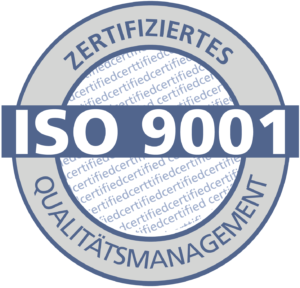Avoid unnecessary expenditure of time for maintenance and cleaning with the HeiNo®-standards
What are HeiNo®-standard parts and why do I need them?
HeiNo® standard parts solve problems that can occur during the injection moulding process regarding gates, ventilation and temperature control.
A production without unnecessary interruptions due to maintenance and cleaning thanks to gate, ventilation and temperature control elements will sustainably save time and energy.
In addition to the IsoForm® concept, these standard parts have been developed, which, adapted to the materials to be processed and the intended temperature control, in order to allow for process-reliable production. This provides a basis for almost any application.
gate inserts
ventilation
redirection element
HeiNo® and IsoForm®:
A convincing concept
“It was our initial aim to reduce the cooling and also the heating times, especially at high mould temperatures. Thanks to the thermal separation of the mould insert and mould structure in the IsoForm® concept in combination with the HeiNo® standards, it is possible to temper only what should be tempered. The significant saving of energy is a pleasant side effect”.
Benedikt Ostermann
Mawick Kunststoff-Spritzgusswerk GmbH & Co. KG
HeiNo®-gate-inserts
(for thermoplastics)
The field of hot runner definition is now at a high level. In recent years, however, the cold runner has often been neglected and often incorrectly constructed, which has led to increased energy consumption (pressure), material damage due to increased shear and many unwished markings on the part.
For most thermoplastics, feeding needs to ensure that the mass is injected into the cavity by means of a cold manifold at the lowest possible pressure and with the lowest possible shaer while allowing fo optimum holding pressure. From elastomers to rubber materials a controlled shear is usually necessary during feeding. Therefore, special attention has to be paid to the cold runner with its specified dead runner, reasonable balancing of channels for multiple gates and a specific film or tunnel gate geometry. Frequently, the information of streaks, vacuoles or air traps and an inadequate surface structure of the part are pre-determined at this point.
The protected low-shear tunnel gate geometry shown on the right is offered by Nonnenmann as an electrode for eroding or, for example, as a finished insert with many fastening options. In combination with “flow speed reduction”, part defects such as the “halo formation” and visible material orientations can be avoided.
Curved HeiNo® tunnel connections can also be used reasonably. Special attention must be paid here to the limited percentage of fibres that can be used.
Combined with the IsoForm® concept, temperature control is also possible in the feed gate area.
tunnel gate
- Low or controlled shear
- flow speed reduction or dead runner on demand
- temperature controlled
- special steels and special surfaces for high fibre reinforced materials and high temperature materials
flow speed reduction
In combination with the protected HeiNo® flow speed reduction, the “halo formation” and visible material orientations close to the gate can be avoided, since the flow velocity is reduced in the first moment and thus an early swelling flow can build up. The illustration shows the HeiNo® tunnel gate with the flow speed reduction with HeiNo®-ventilation ejector in the installed condition. With this temperature-controlled and adjustable gate definition, you have extensive possibilities to increase the quality and process reliability for your product.
Temperature control of tunnel gate inserts
The temperature in the tunnel gate insert can be used to influence the post-pressure, the cleanliness of the shearing of the tunnel gate and the demoulding time for the gate.
Temperature control is possible in HeiNo® tunnel gate inserts, here optimally solved by the built-in redirection element, which always guarantees the ideally round temperature control cross-section for the lowest pressure loss.
HeiNo solutions for ventilation
In the past, venting in injection moulds was usually limited to tightening flags at the end of the flow path, which should be avoided today for various reasons.
The simple and cost-effective venting solutions of the HeiNo® range follow the procedure of comprehensive venting of the mould around the cavity. This serves to improve weld line quality and for controlled venting of the component and sprue area.
Ejector venting
With round, sleeve, flat and profile ejectors, venting is achieved by means of a special groove geometry – designed depending on the material of the moulded part (e.g. polished, hardened, coated). The air volume is relieved by a facet.
benfits
- comprehensive venting
- simple and cost-effective
- fewer defects
- reduced risk of mould damage and deposit formation
- available in many variants
Overflow ventilation
The protected and adjustable HeiNo® overflow ventilation insert is used to optimize weld line qualities and for controlled venting of the part and feed gate area via special HeiNo® venting ejectors. These can be attached in a space-saving manner using a drilled cylinder screw. This ensures venting and discharge of the substrates, which are ahead of the flow front, right up to the last point of the filling. Ideally, the overflow area is designed using an injection moulding simulation, especially for fibre-reinforced components, so that a high weld line quality and load-bearing capacity can be achieved by reorienting the glass fibre in the weld line. The aim for the weld line is to close by definition before the secondary cavity of the overflow vent is filled and then demolded like a tunnel gate.
Advantages of overflow venting
- high weld line quality, especially with glass fibre
- increased resilience
- comprehensive ventilation
- inhomogeneities inside the weld line are eliminated
- designed via simulation
HeiNo® venting variants
A venting insert in the mould separation inside and outside the cavity enables optimum venting depending on the moulded part material through the design of the geometry, material properties, surface finish and coating. Venting inserts can be placed within air pockets in cavities, e.g. due to thinner wall thicknesses, which follow almost any contour and can be easily cleaned.
Here, too, the interesting solution lies in the detail, with special material pairings, polished or structured surfaces, coatings and densifications. For larger venting applications, tempering is also offered to further reduce the risk of clogging for certain moulded part materials.
HeiNo® redirection element
Temperature control bores should always be round and connected in forced circulation. Depending on the diameter and length of the tempering circle, turbulent tempering can be achieved.
Since temperature control with water is particularly effective in turbulent conditions, the ratio of the diameter to the flow path length and the flow velocity of the medium must be taken into account very carefully.
benefits
- same flow cross-sections
- turbulent tempering possible
- lower tool wear
- process-reliable production
- high part quality
Deflector plates, sputterer or differences in diameter from the temperature control connection to the deflectors should not be used if possible! These settle too easily, have a high pressure loss and prevent turbulent tempering.
HeiNo® redirection elements ensure the round cross-section of the temperature control bore. It is important that connecting hoses are correctly dimensioned and that no “water stop” or other reduction is used in the hose couplings.


